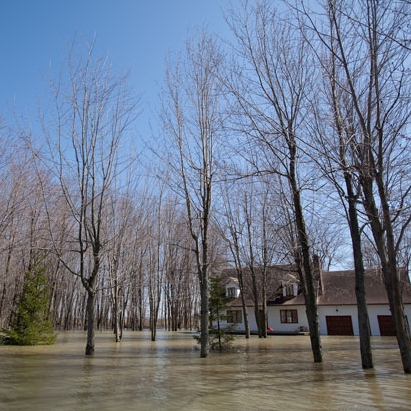SAINT-JEAN-SUR-RICHELIEU, Que. – With entire neighbourhoods half-covered in water, Canadian soldiers were being deployed in southeastern Quebec today to help flood victims.
Their arrival came a day after Quebec Premier Jean Charest asked for help from the Canadian Forces.
About 2,800 people have been forced from their homes, with aerial images showing rows of houses half-submerged along the banks of the Richelieu River.
The flooding has affected 3,000 homes and one-third of those residences have been evacuated. The area’s Royal Military College is among the buildings cleared.
Charest will tour the flooded areas later today.
He is expected to visit some of the communities that have been hit hard by heavy rain over the last several days.
"Yes, we get floods in Quebec in the spring, but this is exceptional, and it doesn’t seem to be stopping," Charest said in Quebec City.
"We hope the waters will subside as quickly as possible and we’ll be able to start the reconstruction process."
Prime Minister Stephen Harper issued a statement to say the federal government is ready to help those affected by the flooding.
"Our thoughts and prayers are with the families of the Richelieu Valley during the devastating floods that have hit the region this month," Harper said.
"I want to assure those families affected, and those dear to them, that the Government of Canada stands ready to assist the people of Quebec in this difficult time.
"We will answer the call for assistance with all means necessary to help ensure the safety of those affected by the rising waters."
Environment Canada explained that this year’s heavier-than-usual winter snowfall – and not just this week’s continual downpour – is responsible for the floods.
It said the snow in the U.S. Adirondacks melted into Lake Champlain and, with this week’s rain, a startling volume of water poured across the border into the Richelieu River.
"This is a really unique phenomenon," said Rene Heroux, an Environment Canada meteorologist.
"To understand how we wound up with a phenomenon of this magnitude, you need to go back to last winter."









Comments